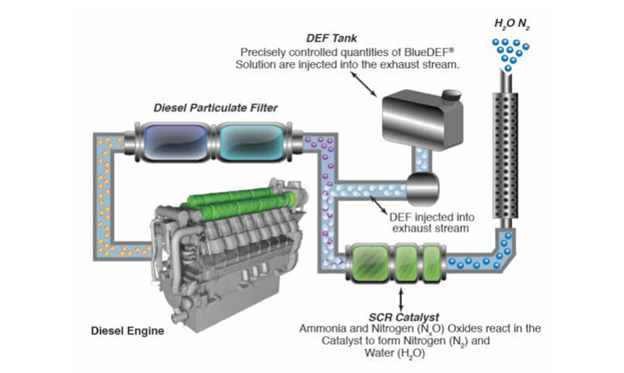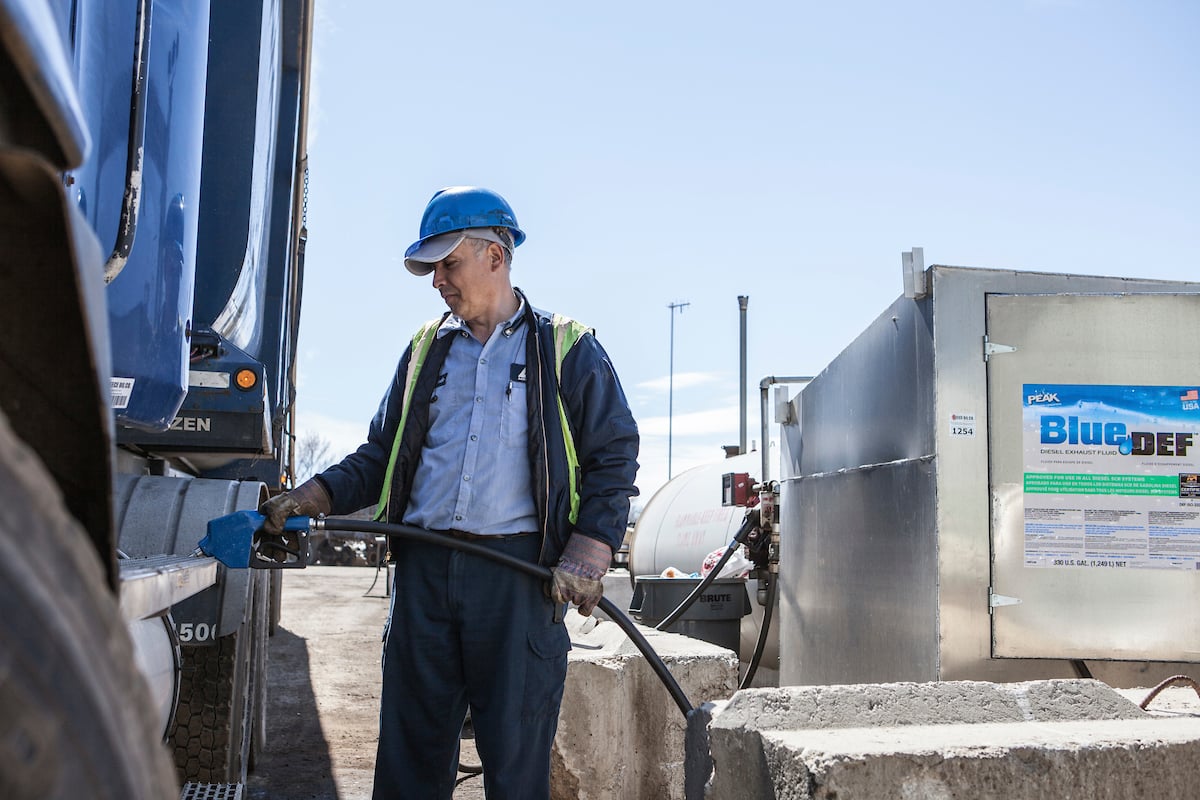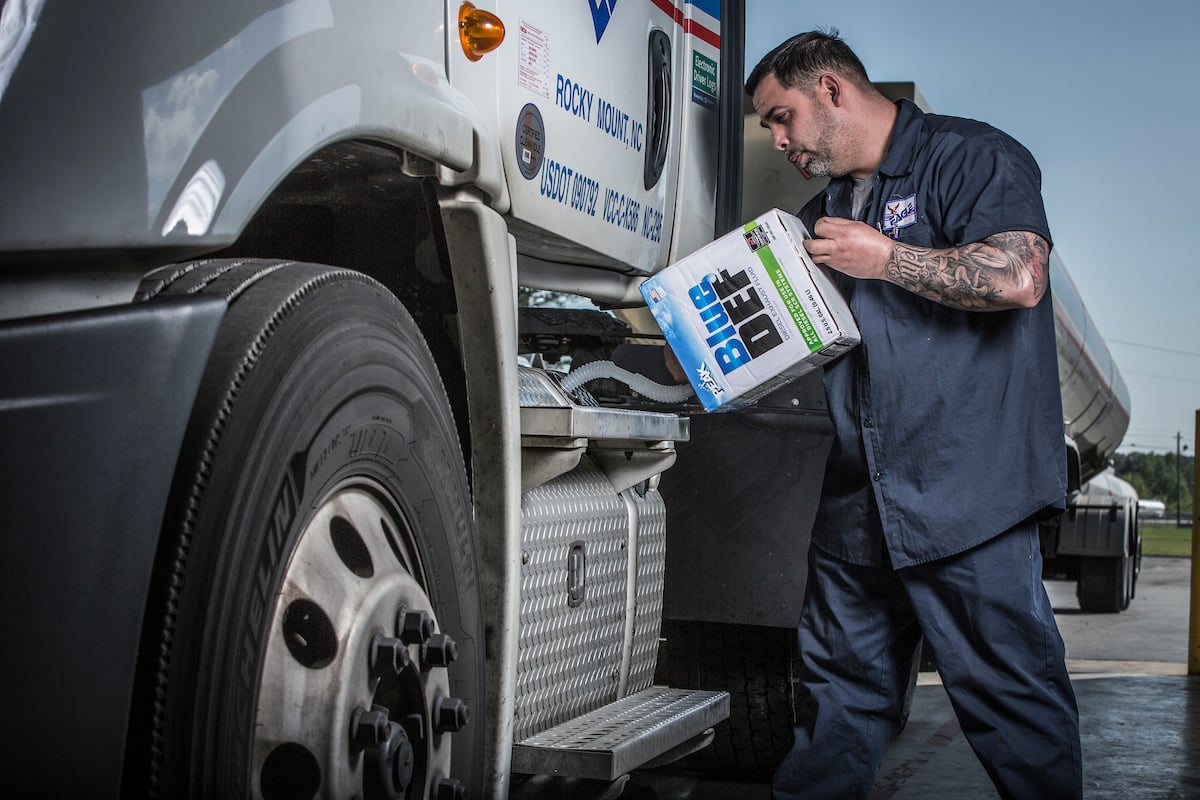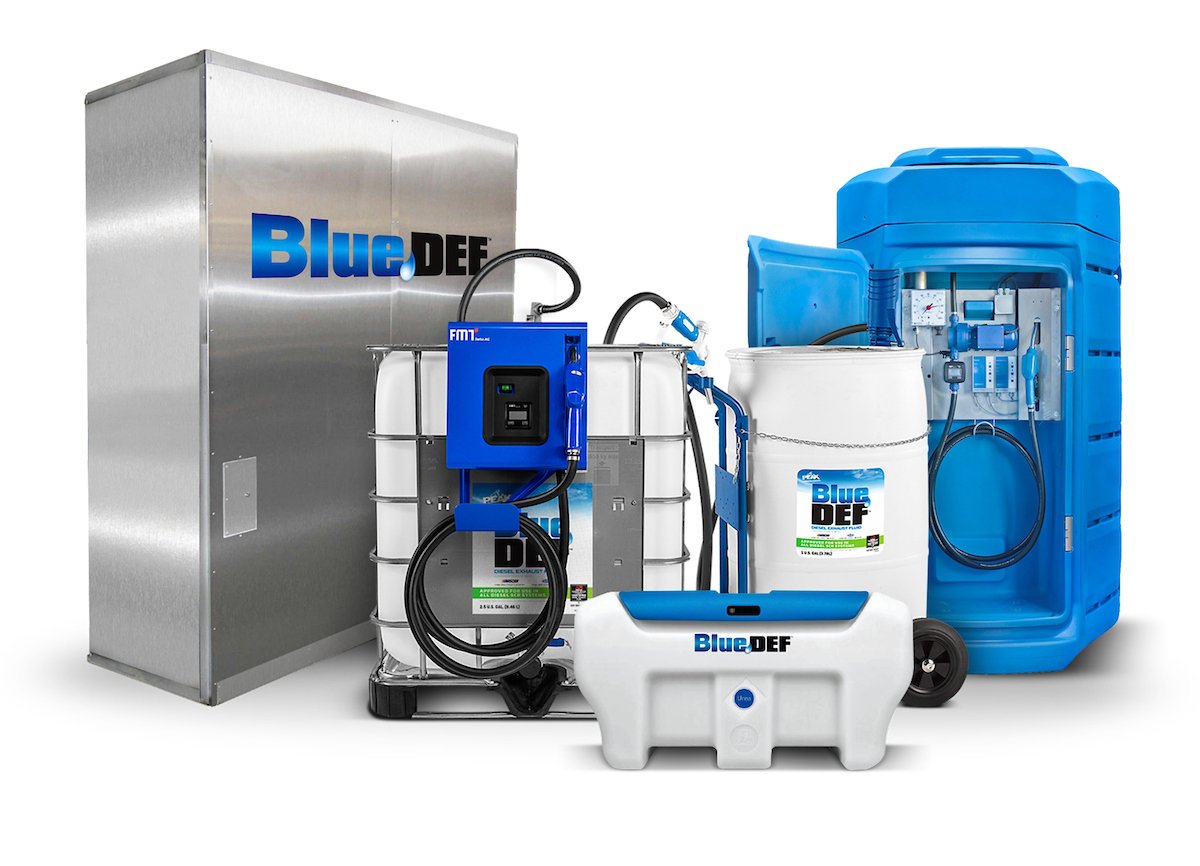
Purity in DEF Delivery
- White Papers
- BlueDEF
- May 11, 2018
With the introduction of the latest Environmental Protection Agency emissions levels limits in 2010, diesel engine manufacturers turned to a new technology to clean up nitrogen oxides in the exhaust stream.
Called selective catalytic reduction (SCR), the exhaust aftertreatment system introduces ammonia from an aqueous solution of automotive grade urea injected into the exhaust to clean up the NOx in the following reaction:
NH3 + NOx = N2 + H2O
While the chemical balance is not precise in this simplification, what is clear is that the addition of ammonia results in the nitrogen oxides being reduced to nitrogen and water. Since these are naturally occurring compounds in the air we breathe, it is a very elegant way of cleaning up diesel exhaust.
While the technology is new to North America, it is a familiar process in Europe where SCR has been used for diesel exhausts since the requirements of Euro 5 regulation in 2008.


But to hasten the adoption of the cleaner and more fuel efficient diesel vehicles, various incentives were available in Europe that pulled the adoption of SCR forward to as early as 2006.
The SCR technology actually goes back even further. It has been widely used in electrical power generation facilities to clean up smokestack emissions for decades.
The Emissions Solution
In Europe the reagent as the chemical solution is termed, is sold as Ad Blue. In North America it goes by the descriptive name Diesel Exhaust Fluid, more widely known as DEF. Historically and because of the European name, blue has become associated with SCR and on-vehicle tanks for DEF carry a blue filler cap. Daimler takes this a step further and refers to its SCR technology as BlueTEC. Similarly, PEAK Commercial & Industrial, which is the nation’s number one producer of DEF has adopted BlueDEF® as its brand name.
The solution has to be manufactured from an automotive/medicinal grade of urea dissolved in de-ionized water, with the solution containing 32.5% urea and 67.5% water. In the heat of the exhaust stream and over a catalyst, the urea gives up ammonia for the above chemical reaction.
Urea is a widely used product, in fact it may be the most widely manufactured chemical compound since it is used worldwide as a fertilizer. However this should not be confused with the automotive/medical grade that is required to have a much higher purity. This is assured by making the urea synthetically from natural gas.
The actual composition is contained in the ISO standard 22241 and in North America each manufacturers’ fluid is certified by the American Petroleum Institute, so packaging for DEF should carry both the ISO artwork and the API logo to verify that it has been manufactured correctly and in the right formulation.
All commercially available DEF is manufactured in this way, either at a main automotive/ 3 medicinal grade urea manufacturing plant, or the de-ionized water can be added to the urea at a distribution plant to save the cost of shipping water along with the urea.
Since the composition of the DEF is strictly controlled by the ISO standard, the solution should be guaranteed to be of the same quality across the board. Obviously, it would be possible to use agricultural grade urea, but this would fall outside the ISO and API requirements, but it is conceivable that such a compound could find its way to spot markets. More likely, though, problems with DEF could be caused in the addition of the de-ionized water at the distribution point or be contaminated in the distribution system by incorrect procedures and handling.
In the case of BlueDEF®, manufactured by PEAK Commercial & Industrial, a whole protocol has been developed to eliminate the potential for contamination through the transportation and distribution process. There is no possibility of cross-contamination with other products as the railcars and road tankers that carry the fluid are dedicated to the shipping of urea or DEF alone. BlueDEF® uses some common carriers but they must follow BlueDEF®’s strict equipment purity specifications. This specification does not allow common carriers to washout the tanks after other product has been carried; the tanker trailers or railcars have to be dedicated to the DEF product alone. Similarly, dedicated equipment is used at any transfer point and there are tamper-resistant seals for containers.


Each shipment comes with a laboratory certification that it meets the ISO specification and extraordinary care is taken in the chain of custody to the end consumer to ensure that whether the DEF is in one, two-and-a-half gallon jugs, drums or 275 or 330 gallon totes it is of the same guaranteed quality. This also applied to DEF that is delivered in bulk, with dedicated tank trucks hauling only DEF making the deliveries.
BlueDEF® refers to this as a closed liquid system and is one of its differentiators compared to some competitors. Customers are also required to have closed systems that have a valve coupling system that seals the container opening on drums and totes (IBCs) that meets BlueDEF® specs. This will prevent contaminants such as dirt, debris and bugs, from entering the container.
BlueDEF® is unique in its careful handling of its DEF but a customer should look for the correct labeling. If shopping on the spot market, there is no guarantee that the DEF will be of the same purity as the fluid that is distributed in this closed liquid system. There may be problems with the water used to dissolve the urea, or the urea may itself be of inferior quality.


Consequences of Inferior DEF or Short Supply
The consumption of DEF is only around 2% to 3% of the volume of diesel fluid, so heavy and medium trucks carry only around 25 gallons or less of the exhaust fluid on board. More would only add weight to the system. But with such low rates of use, poor quality DEF can lead to problems with the injection system that introduces the fluid into the exhaust. If the DEF is off-spec and not cleaning the truck exhaust as it should, a downstream NOx sensor will send a fault code and a warning to the driver. This will also happen if the truck runs out of DEF because the driver didn’t top up the DEF tank when filling the vehicle’s diesel fuel tanks.
This can be avoided if the driver keeps an eye on the dash-mounted DEF gauge and heeds the various warnings built in to the DEF storage and supply system on board the vehicle.
The fault code would also light up the check-engine light (or malfunction indicator lamp– MIL). In extreme cases the engine will go into a derate situation where the truck may have to go to a dealer for the fault to be corrected.
According to PEAK Commercial & Industrial there have never been any instances where a truck ends up in a dealership where the fault could be traced to BlueDEF®. Such few problems that have been investigated usually indicate a failure of some sensor in the emissions system.
Supply is Key
Because every post 2010 diesel vehicle requires the best, most consistent DEF to function correctly, maintenance managers must ensure that their supplies, whether in drums, totes or in bulk are delivered in a timely fashion. Calculators are available to predict the type of container solution for the fleet size and the rate of adoption of post 2010 technology vehicles. As more vehicles using SCR technology are commissioned in the fleet, the rise in the use of DEF must be accommodated.


Despite the careful attention to inventories of DEF on hand and anticipated in future, maintenance managers report issues with orders not being fulfilled in time, presenting problems with getting trucks out on to the “ready line” to go in to service. So part of the due diligence in selecting a supplier is to verify the delivery performance.
A conscientious manager will not only keep an eye on the levels in the containers being used and ramp up orders to keep pace with equipment, but will ensure that the distributors/ suppliers have a reliable record on on-time delivery. That, and the use of a DEF that has been manufactured to the ISO standard, certified by API and handled through a closed liquid system is a guarantee that trucks will be running down the highway not sitting at the side of the road.